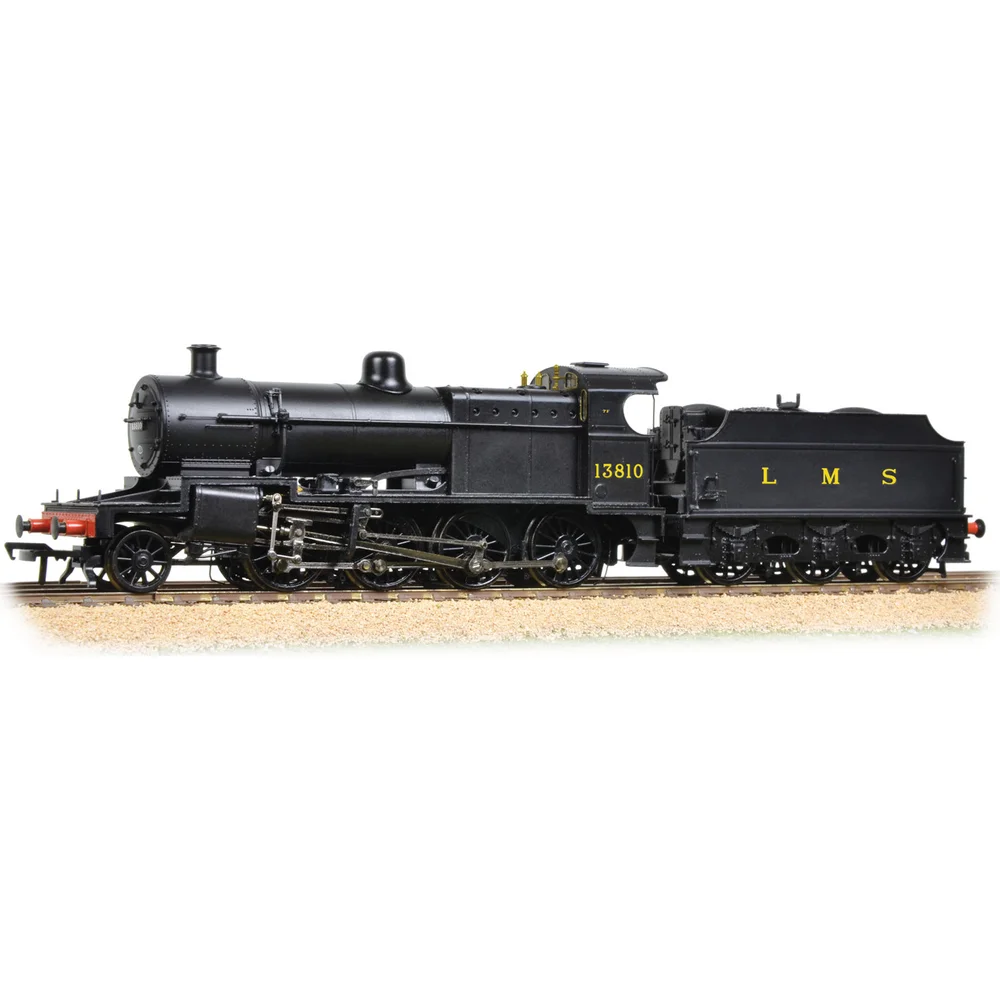Bachmann 31-015
Somerset & Dorset Joint Railway 7F 2-8-0 13810 London, Midland & Scottish Railway Black
Tooling
The Bachmann Branchline Somerset & Dorset Joint Railway (S&DJR) 7F 2-8-0 was first introduced in 2010, marking a significant addition to the OO gauge market. This model represents the powerful freight locomotives designed specifically for the steep gradients of the S&DJR, originally built in 1914 and 1925. The tooling was developed to capture the distinctive features of these locomotives, which were among the most powerful mineral engines of their time.
Tooling Features
- Scale: OO Gauge (1:76 scale)
- Construction: Die-cast chassis with plastic body shell
- Detailing: High-fidelity detailing including separately fitted handrails, brake rigging, and pipework. Some models include etched plates and Deeley tenders.
- Couplings: NEM pockets with tension-lock couplers; cosmetic screw-link couplers included in accessory packs
Mechanical & Electrical
- Motor: Centrally mounted motor driving the main driving wheels via a gear train
- Minimum Radius: Recommended second radius curves (approx. 18 inches / 450 mm)
- Lighting: No factory-fitted lighting
- Weighting: Heavily weighted chassis for improved traction and realistic performance
DCC Capability
- Interface: DCC Ready with 21-pin socket
- Decoder Installation: Decoder fits in the tender; blanking plug included for DC operation
Liveries Produced
- S&DJR black (pre-grouping)
- LMS black (1923–1947)
- BR black with early emblem (1949–1957)
- BR black with late crest (1957–1968), including weathered variants
- Special edition: S&DJR blue for the 150th anniversary
Reviews & Commentary
The model received positive reviews for its accuracy, smooth running, and attention to detail. It was praised for capturing the rugged character of the prototype and for its reliable performance on layouts. Some early DCC installations encountered issues with decoder compatibility, but these were resolved with proper fitting and updated chips.
Media & Social Media
The S&DJR 7F tooling has featured in various YouTube videos and enthusiast forums, often showcased hauling heavy freight on heritage-style layouts. It was also highlighted in the UKTV series "Hornby: A Model World," where its sound-equipped variant was demonstrated using recordings from preserved locomotives.
Additional Notes
Accessory packs typically include etched plates, vacuum pipes, and optional detailing parts. The model is not suitable for children under 14 due to its fine detailing and small components.
Class & Prototype
- Class: Somerset & Dorset Joint Railway 7F 2-8-0
- Traction: Steam
- Built: 1914-1925
- Total Built: 11
No prototype found.
Operator & Livery
- Operator: London, Midland & Scottish Railway
- Livery: Black
The London, Midland & Scottish Railway (LMS) was Britain's largest railway company from 1923-1948, formed by merging over 120 independent railways under the Railways Act 1921. Operating 7,790 route miles across England, Scotland, Wales, and Northern Ireland, the LMS became the world's largest transport organisation and the British Empire's biggest commercial enterprise. Famous for iconic locomotives like the streamlined Princess Coronation class, versatile Black Fives, and Royal Scots, the company evolved from inherited pre-grouping designs to revolutionary Stanier innovations. The LMS operated major routes including the West Coast Main Line from London Euston to Scotland, serving as the UK's second-largest employer after the Post Office. Nationalised in 1948 to form British Railways' London Midland Region, the LMS legacy continues through extensive preservation efforts and remains a favourite subject for railway modellers seeking authentic British steam-age prototypes.
The LMS plain black livery served as the standard finish for freight locomotives and represented practical railway economics during the company's existence. Applied without lining or embellishment, this utilitarian scheme recognised that goods engines operated in inherently dirty conditions where elaborate paintwork proved both expensive and impractical.
Most LMS freight classes including the ubiquitous 0-6-0 goods engines, 0-8-0 heavy freight locomotives, and tank engines used for shunting duties wore plain black throughout their service lives. The scheme extended beyond locomotives to goods wagons, where black paint provided adequate weather protection at minimal cost.
During World War II, plain black became increasingly common as material shortages and wartime economies forced the abandonment of more elaborate liveries. Even some passenger locomotives temporarily adopted unlined black finishes when crimson lake supplies became unavailable. The practical benefits of black paint - its ability to hide dirt, soot, and industrial grime - made it ideal for locomotives working coal trains, mineral traffic, and heavy industrial duties.
For modellers, plain black represents the workhorse reality of LMS operations, particularly appropriate for freight yards, colliery branches, and industrial settings where authentic weathering and operational realism take precedence over passenger train glamour.
